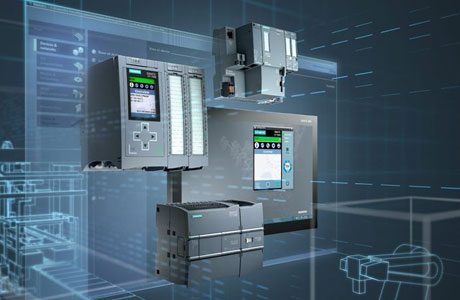Is TIA Portal Step 7?
Key Takeaway
The TIA Portal, also known as the Totally Integrated Automation Portal, is part of Siemens’ STEP 7 software suite. It allows users to configure, program, test, and diagnose controllers for Siemens automation systems like the S7-1200, S7-1500, and others. TIA Portal integrates various functions for a streamlined user experience, supporting different levels of automation from basic to advanced controllers.
STEP 7 Basic (TIA Portal) is designed for basic automation tasks, suitable for smaller projects. In contrast, STEP 7 Professional supports more complex configurations and large-scale applications.
This software is used for programming and engineering tasks, offering efficient workflows and full integration across Siemens’ modular hardware and PC-based controllers.
What Is Siemens TIA Portal?
Siemens TIA Portal is an advanced software platform that enables seamless integration of automation systems within Siemens’ industrial environment. The TIA Portal provides a unified engineering framework that integrates various components, such as PLC programming, HMI design, motion control, and drive configuration.
It aims to simplify automation tasks by bringing all necessary tools into one interface, allowing engineers to configure, program, and maintain industrial systems more efficiently. TIA Portal plays a pivotal role in the development of automation solutions, offering streamlined processes and real-time diagnostics for better performance.

Introduction to Step 7 in Siemens PLC
Step 7 is Siemens’ proprietary software used for programming and configuring Siemens PLCs (Programmable Logic Controllers). It provides a comprehensive platform for creating automation systems, offering an intuitive interface for designing control systems, configuring hardware, and programming in various languages such as ladder logic (LD), structured text (ST), and function block diagram (FBD). Step 7 is widely used in industries to control processes, machines, and production lines with high reliability and precision.
The software integrates with Siemens’ hardware range, including the S7-1200, S7-1500, and S7-300 PLCs, facilitating seamless communication and configuration. Step 7 allows users to define hardware setups, configure network parameters, and troubleshoot systems in real-time. It supports advanced features like motion control, PID control, and safety applications, ensuring robust performance in complex automation tasks.
Step 7 also includes tools like the TIA Portal (Totally Integrated Automation), which provides an enhanced user experience with an integrated approach to PLC programming, HMI (Human Machine Interface), and SCADA systems. This integration simplifies the automation process and enables efficient project management, making it a crucial tool for engineers in the field of industrial automation.
You May Like to Read
Key Features of Step 7 and TIA Portal
Both Step 7 and TIA Portal offer unique features that support industrial automation but with differences in ease of use and integration:
1. Step 7:
Comprehensive PLC programming capabilities.
Supports SIMATIC S7-300/400 controllers.
Uses separate software packages for different tasks (e.g., diagnostics, configuration).
Primarily designed for large-scale projects with older Siemens PLCs.
2. TIA Portal:
Offers a unified platform for PLC programming, HMI design, and motion control.
Compatible with S7-1200/1500 controllers.
Simplifies programming with integrated tools and real-time diagnostics.
Reduces time for system integration, making it ideal for smaller projects and new technologies.
Differences Between Step 7 and TIA Portal
The main difference between Step 7 and TIA Portal lies in their integration and ease of use. While Step 7 is an established tool for Siemens PLC programming, it often requires separate software for various tasks, making it more complex and time-consuming, especially when dealing with large projects or multiple devices. In contrast, TIA Portal consolidates all automation tasks into a single platform, providing a more user-friendly interface for programming, configuration, and monitoring.
Additionally, TIA Portal supports more modern Siemens PLC models, such as the S7-1200 and S7-1500, offering better performance and communication capabilities. Step 7, on the other hand, works with older PLC models like the S7-300 and S7-400. TIA Portal also comes with advanced features like cloud integration, simulation tools, and remote diagnostics, making it a more future-proof solution for industrial automation.
Applications of Step 7 in PLC Programming
Step 7 is widely used in PLC programming for industrial automation, especially in applications where complex control systems are needed. It is designed for Siemens S7-300 and S7-400 PLC models, which are commonly used in large-scale industrial settings. Step 7 provides robust capabilities for programming tasks such as process control, machine automation, and batch production systems, making it an essential tool for managing intricate automation processes.
In industries like manufacturing, automotive, and food processing, Step 7 plays a key role in controlling complex machinery and ensuring smooth operations. It supports the use of various programming languages, including ladder logic, structured text, and function block diagrams, allowing engineers to design programs that match specific needs. For example, in assembly lines, Step 7 can help coordinate multiple machines, synchronize actions, and manage production workflows, optimizing efficiency.
Additionally, Step 7 is also suitable for integration with legacy systems, which is a common requirement in industries with older equipment. This backward compatibility allows businesses to modernize their automation systems without needing a complete overhaul. Its ability to handle detailed diagnostics, perform error tracking, and provide system-wide monitoring makes it indispensable for ensuring high reliability and minimizing downtime in critical operations.
Conclusion
While Step 7 and TIA Portal are both essential tools in Siemens’ PLC programming ecosystem, they cater to different needs. Step 7 is well-suited for large-scale and legacy projects, while TIA Portal is designed for modern, integrated automation systems. TIA Portal offers significant improvements in terms of ease of use, system integration, and advanced features, making it the preferred choice for new projects and automation technologies.
In essence, TIA Portal can be considered the evolution of Step 7, providing a more efficient and flexible platform for industrial automation. Understanding the strengths of both tools helps bridge the gap between traditional PLC programming and modern automation solutions, enabling industries to adapt to the changing demands of technology.
